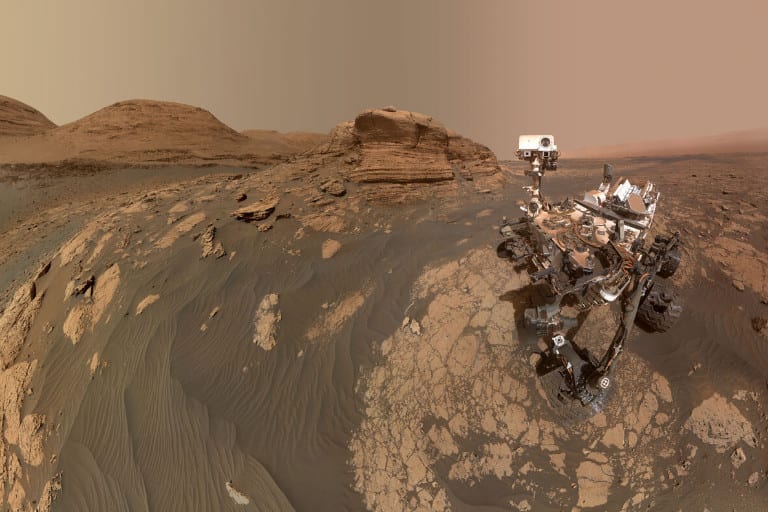Robots On Mars? The Curiosity Rover Is Armed To Explore
Continuing our look at robotic arms for every mission, now we turn to the Curiosity rover, which landed on Mars on August 6, 2012.
The size of a small SUV, the Curiosity rover has an arm reach of about 7 feet, and it weighs close to 2,000 pounds in Earth gravity (743 pounds in Mars gravity). In addition to its robotic arm, Curiosity features a built-in geology lab, a rock-vaporizing laser, a toolkit of exploratory instruments, and 17 cameras. Curiosity’s primary mission lasted 23 months (one Martian year). The mission completed, the rover continues to operate on Mars today.
Features Of The Robotic Arm
Curiosity’s robotic arm has 5 joints, allowing maximum maneuverability for its turret. Mounted to the turret are specialized instruments for collecting, sorting, and analyzing rock samples.
The robotic arm’s drill system is capable of drilling up to two inches into the rock surface, producing granular samples for the rover to collect for internal analysis. As the rotary percussive bit penetrates the rock, the drill draws the resulting powder into an auger, sending it to the rover’s sample analysis center.
The drill’s operation is crucial to the rover’s mission, and if a bit becomes stuck in a rock, the arm releases it and directs the drill to install one of the spare bits mounted to the rover’s exterior.
Tools For Surface Analysis
Also attached to the robotic arm, the Alpha Particle X-Ray Spectrometer (APXS) uses radiation to detect and measure chemical presence on rock and soil surfaces. The APXS works in concert with the Dust Removal Tool (DRT), a metal-bristle brush that sweeps away dust to allow cleaner examination of rock surfaces. Removing the dust layer can reveal the mineral makeup of the rock, whether the rock was ever in contact with water, and if any organic matter is present on its surface.
Another tool on the rover’s arm, the Mars Hand Lens Imager (MAHLI) provides magnified images of rock surfaces and the minerals found on them. Scientists can review thumbnail images captured by MAHLI, and select specific image files to be sent back to Earth. MAHLI’s images of Martian rock textures help scientists determine which samples to collect for deeper analysis.
Studying the composition of Martian surface materials reveals the environmental conditions by which they were formed. One small rock can provide a wealth of information about its native landscape.
Signs Of Water Activity On The Martian Surface
Over the past 50 years, 6 rovers have been sent to Mars, with varying levels of mission accomplishment. Information gathered by Mars rovers helps scientists plan for eventual human missions to the Red Planet, and to discover potential landing sites. One essential chemical compound for a sustainable human presence on Mars? Water.
Today, the cold atmosphere of Mars is too thin to support the existence of surface water – and organic life cannot exist without water. Evidence of past water activity on Mars was first discovered by a robotic space probe on the Mariner 9 mission, in 1971. NASA imaging revealed visible river beds, canyon channels, gullies, and signs of water erosion on the Martian surface. Snow clouds and frozen polar caps were also identified.
Details about the geological and atmospheric history of Mars are uncovered by robotic rovers like Curiosity. Learning what lies beneath the Martian surface is the next objective for exploration. Mapping subsurface ice, for example, will give future astronauts a better idea of where to look for microbial remnants of past life on Mars.
The pioneering work done by rovers like Curiosity and Perseverance helps scientists and engineers plan eventual human missions to Mars. Motiv Space Systems built the robotic arm in use on Perseverance today and plans to continue delivering engineering ingenuity to space exploration. The success of the Curiosity mission points to the continued success of the Perseverance mission – and missions yet to come.
Want to see the Curiosity Rover – and its arm – up close? Explore it in 3D on the NASA website.
